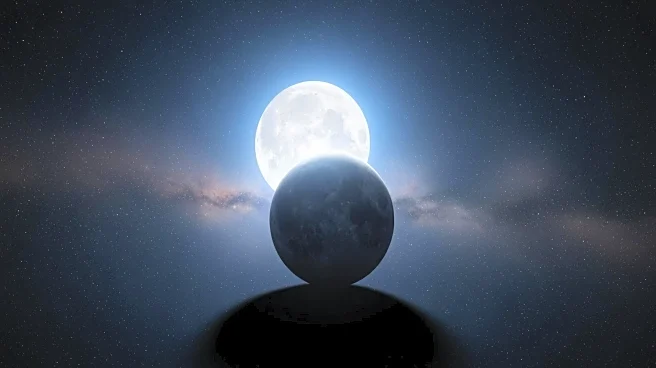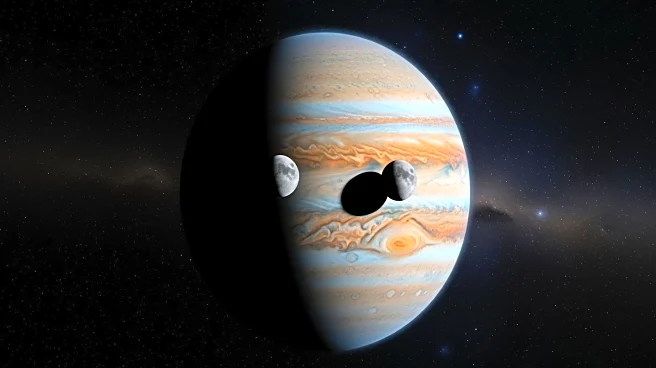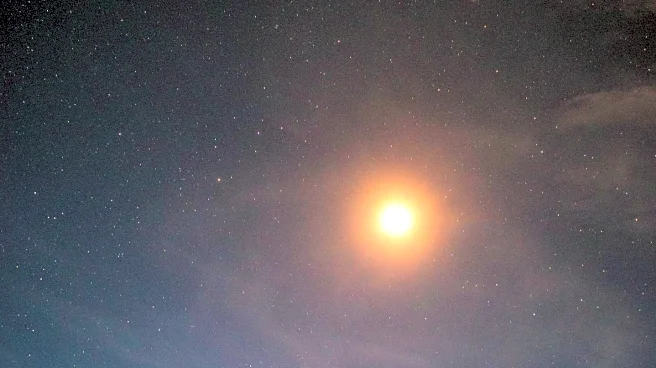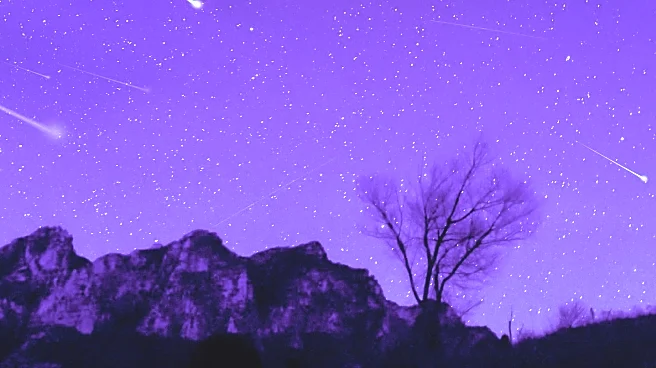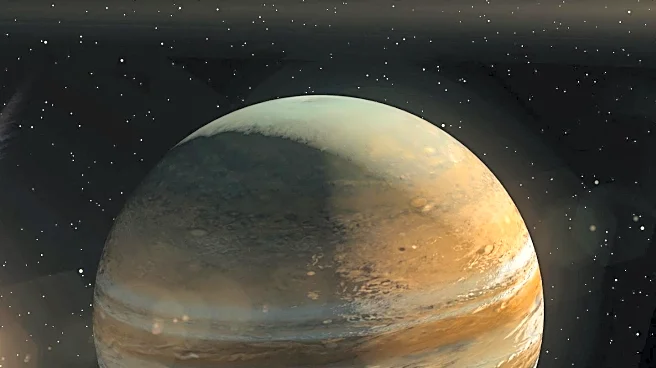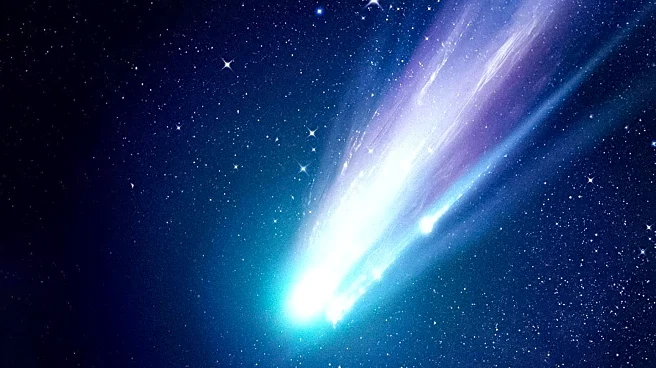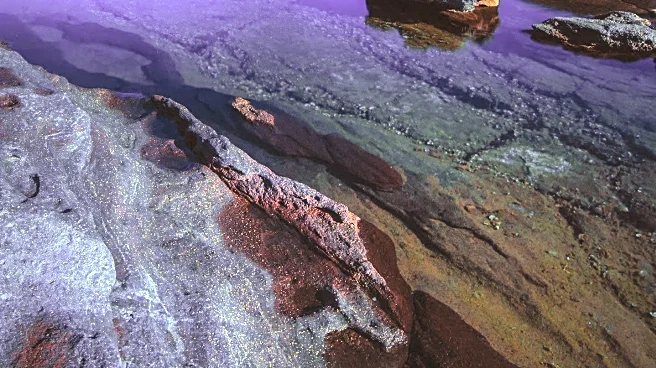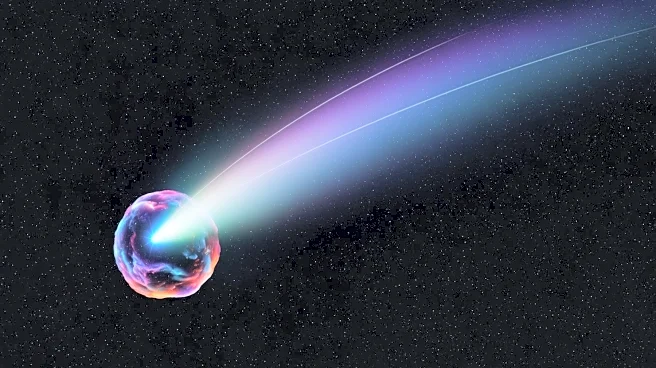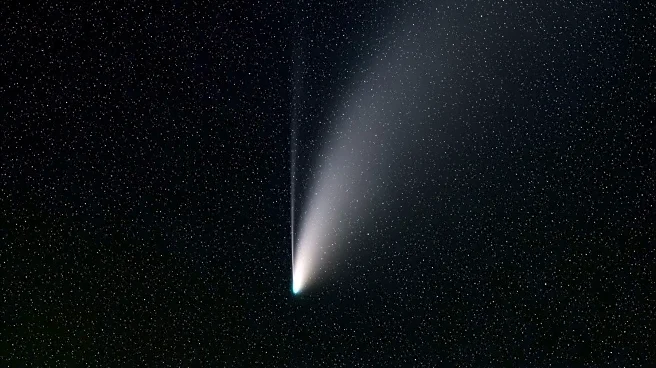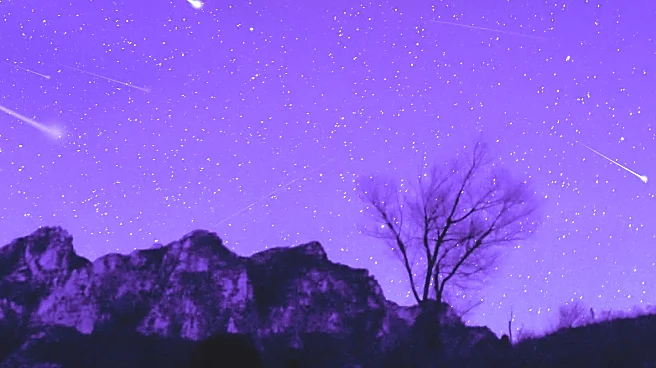What's Happening?
On October 18, early morning skywatchers will witness a celestial event as Jupiter's moons Io and Europa transit across the planet, casting their shadows on its cloud tops. This event, visible through
telescopes, will showcase all four Galilean moons aligned to Jupiter's east. Io's shadow will appear first, followed by Europa's, providing a dynamic display for astronomy enthusiasts. The event is part of a series of celestial occurrences, including a conjunction of the waning crescent Moon and Venus in the constellation Virgo, offering a rich observational experience for stargazers.
Why It's Important?
Such celestial events offer valuable opportunities for both amateur and professional astronomers to study the dynamics of Jupiter's moons and their interactions with the planet. Observing these transits can enhance understanding of orbital mechanics and the gravitational influences between celestial bodies. Additionally, these events inspire public interest in astronomy, encouraging educational outreach and engagement with the sciences. The visibility of these phenomena across different time zones also highlights the global nature of astronomical observation.
What's Next?
Following the transit of Io and Europa, observers can look forward to a conjunction of the Moon and Venus, providing another opportunity for skywatching. These events are part of a broader calendar of astronomical occurrences, including the Orionids meteor shower, which peaks later in the month. Such events continue to captivate audiences and provide ongoing opportunities for observation and study, fostering a deeper appreciation for the complexities of our solar system.
